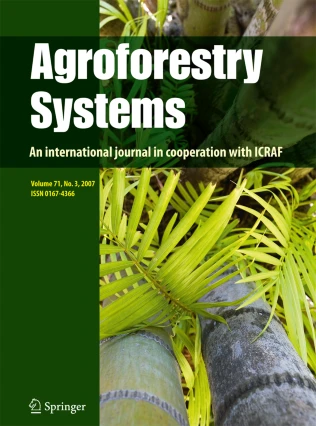Cacao agroforestry systems (AFS) represent a more sustainable alternative to monocultures by providing significant benefits in terms of carbon stocks and biodiversity conservation. For their adoption, farmers must make key decisions regarding the tree species to integrate and the type of spatial arrangement to implement. This study aimed to evaluate how tree diversity in AFS influences the provision of ecosystem services (ES), as well as the potential synergies and trade-offs among them, in the southern Colombian Amazon region. We analyzed three AFS arrangements, scattered trees, live fences, and alley cropping, and four ES (aboveground carbon stocks, and provision of cacao, timber and fruit). Thirty farms were sampled using variable-area transects to record tree composition and density. Carbon stocks were estimated using an allometric equation, cacao yields were reported by farmers, and timber and fruit provision were indirectly quantified through the basal area of fruit and timber trees. A total of 121 tree species were identified, mostly native species. Although tree diversity and density did not vary significantly among AFS arrangements, composition differed. Significant synergies were detected between regulating ES (aboveground carbon stocks) and provisioning ES (timber provision), both of which were associated with tree species richness and density. In contrast, no statistically significant trade-offs were found between cacao yields and other ES. In conclusion, diverse AFS can sustain multiple ES, but require careful planning and incentives that recognize their value in terms of ecosystem service delivery and biodiversity conservation.
Solarte-Soto, J.A.; Ospina-Bautista, F.; Fremout, T.; Melo-Zipacon, W.F.; Valencia-Molina, M.C.; Pulleman, M.

